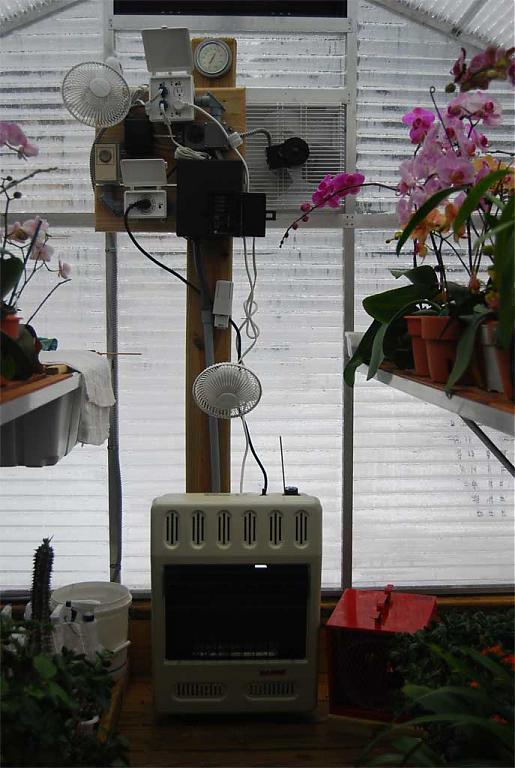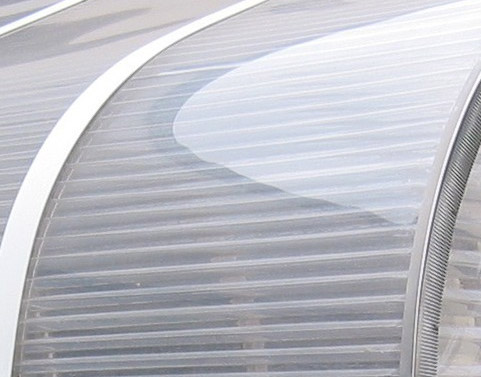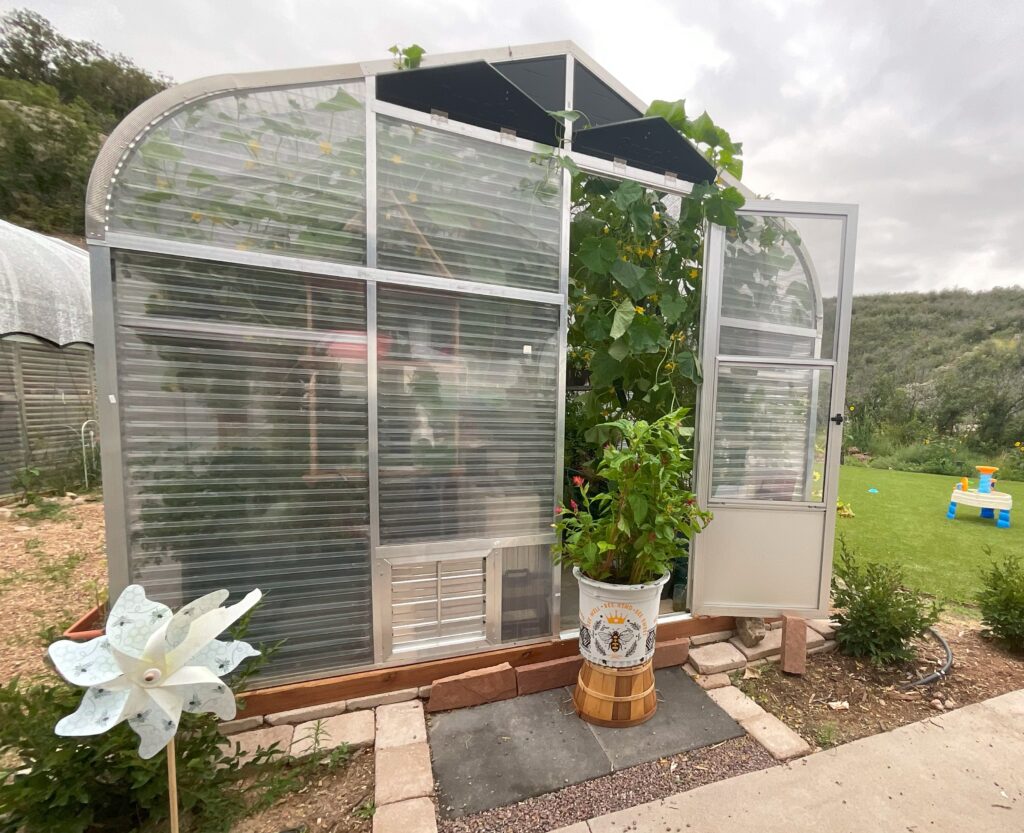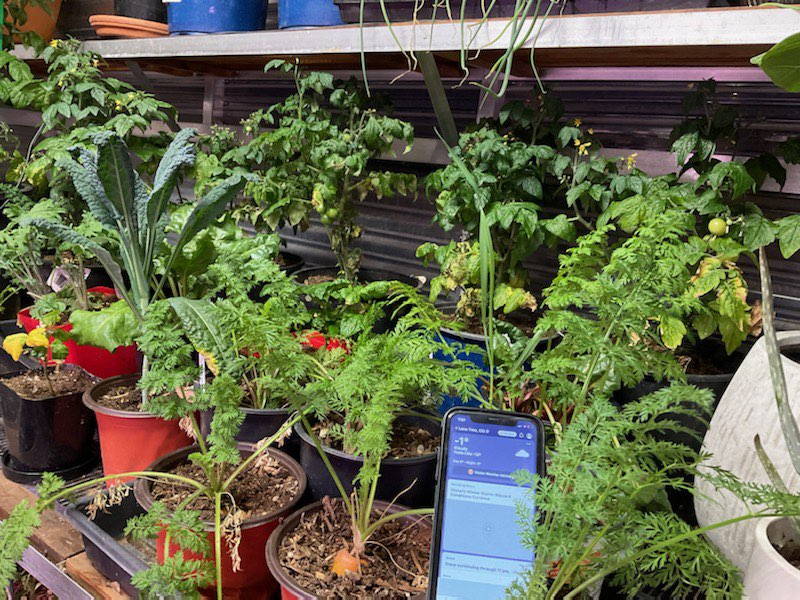Greenhouse Heating
Adding a heater to your greenhouse will allow you to grow earlier and longer into the season. There are many different heater options to consider. The solution will ultimately be based on your unique situation. If you have a greenhouse I highly recommend you plan to have a heater on hand regardless if you plan to grow year-round.
Access to utilities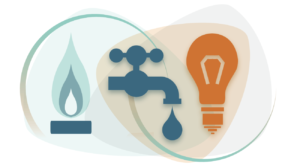
When deciding on a type of heater ask yourself what current utilities are available at the greenhouse site. Greenhouse heaters usually require natural gas, propane, or electricity. If you do not have access to any of these you can also consider using a wood stove. If there’s an outlet nearby a solution may be to run a heavy gauge outdoor extension cord to provide the power necessary to run an eclectic heater. In short, the utility access you have may ultimately determine what type of greenhouse heater you will choose.
Your goals for the greenhouse
If you plan to grow year-round then consider using the cheapest source of energy, which is typically gas. An electric heater works fine for those growers who are planning for a
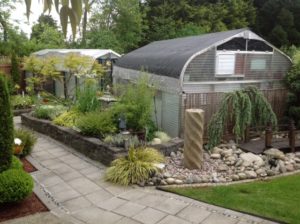
season extension or are willing to grow on the colder side. For most growers just having a small heater available to use in an emergency when Mother Nature decides to throw you a curve ball. Hope for the best, but plan for the worst. Understand how you plan to use the greenhouse to determine if you even need to buy a heater or what type of heater will work best. An important note I would like to mention for those using the greenhouse space to start seeds, you may be well served by using heat mats rather than attempting to heat the whole greenhouse space. I have successfully germinated seeds inside a 40F greenhouse using propagation heat mats thereby focusing on soil temperatures.
Heater Options
Recommend installing a carbon monoxide & gas detector inside the greenhouse.
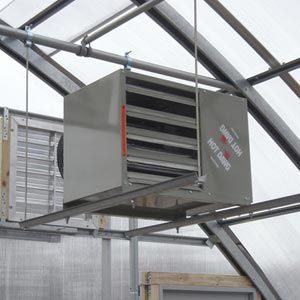
A hanging Modine Hot Dawg Gas Forced Heater
Forced Gas heaters are safe, reliable, and easy to use. The heater can be configured to run on either natural gas or propane. These types of heaters tend to be the more expensive option to purchase and install but if you expect heavy use these heaters will ultimately save you money. The greenhouse/garage heaters typically are mounted on a frame and hung. Keep this in mind making sure the greenhouse structure can support the weight of the stove or additional structural support will be needed. Modine is a well-known name in manufacturing greenhouse heaters offering smaller models for greenhouse spaces down to 250 sq. ft.
Forced gas heaters operate similarly to what you have in your house. When purchasing, make sure the stove has a stainless steel heat exchanger. I have also seen the use of portable propane stoves in greenhouses as well. These stoves attach directly to small propane tanks. Yet another option, is the use of diesel or kerosene torpedo heaters if there’s no access to gas/propane. Dyna-Glo makes a nice heater for this purpose. I have to warn you though that fuel costs may make this option prohibitive.
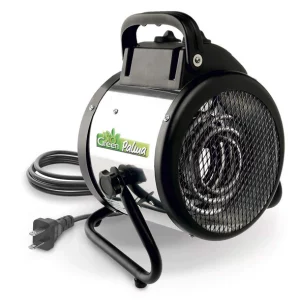
110v Palma Greenhouse Fan Heater
Electric heaters are what you’ll find in use for most backyard hobby greenhouse applications. Electric heaters are portable and do not require much space but can be very expensive to operate all winter long. These heaters are less safe and depending on use have a shorter life expectancy versus a gas heater. I advise that if you plan to go this route you use a dedicated 110v grounded circuit to power the heater. A suitable greenhouse heater requires up to 1500 watts. Some heaters can produce higher wattages but require a 240v grounded circuit (similar to what a clothes dryer runs on). If unsure, please consult a licensed electrician to avoid potential problems. Electric heaters all work by heating a coil and then have a fan blowing air through the coil or passively heating without a fan or heating oil. If you use an electric heater it’s imperative to have these plugged into a GFCI ( ground fault circuit interrupter) given electricity and water don’t mix and greenhouses tend to be wet environments. A few other safety notes, keep flammables away from heaters and if using an extension cord do not keep it bundled tightly as the wires build up heat and can start a fire.
Radiant (infrared) Heating is an economical option for use in a greenhouse by heating the surfaces instead of trying to heat the air space. Our Sunglo Greenhouse Winter Kit includes a 1000W or 1800W Infrared Radiant Heater with thermostat controls. Controlled by a digital thermostat allows you to set the temperature. A Sunglo infrared heater is designed to be hung and directed at the crops below.
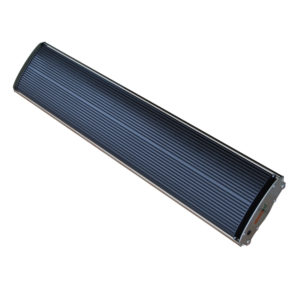
Sunglo Greenhouse Infrared Heater
Infrared heaters emit infrared radiation, which travels in a straight path at the speed of light. An infrared heating system transfers heat to objects (e.g., plants, the floor, soil, benches, trays, etc.) first by the infrared rays; the heat “charge” in the object allows the secondary heat transfer processes from those objects to take place by radiation, conduction, or convection in all directions. Spreading the heat to multiple surfaces elevates the mean infrared temperature of the entire indoor environment. The heated objects will also transfer heat to the air by convection and raise the air temperature. Again, make sure the infrared heater has a dedicated grounded circuit either 110v or 240v depending on size.
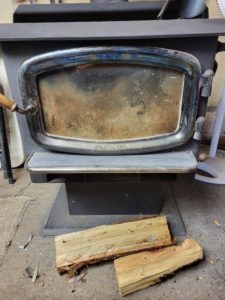 Wood Stove/Pellet Stove may be something to consider for your greenhouse or in combination with the stoves mentioned above. For some growers accessing utilities may be impossible. Consequently, a wood stove can be a great option if you have access to firewood. The downside here is they take up space inside the greenhouse and have to be manually operated. If firewood is readily available it might be the cheaper option and also works off the grid so if you lose power you can still provide heat to your greenhouse.
Wood Stove/Pellet Stove may be something to consider for your greenhouse or in combination with the stoves mentioned above. For some growers accessing utilities may be impossible. Consequently, a wood stove can be a great option if you have access to firewood. The downside here is they take up space inside the greenhouse and have to be manually operated. If firewood is readily available it might be the cheaper option and also works off the grid so if you lose power you can still provide heat to your greenhouse.
Wood pellet stoves are nice because they are self-feeding therefore more automated. Pellet stoves eliminate the need for a wood pile and give you better control over regulating the temperature. Be aware that there are electric and non-electric pellet stove options.
Size of Heater
If you have a small greenhouse of less than 250 sq. ft. and prefer to keep it simple plan to use an electric heater. I would suggest buying a 1500 Watt heater. When you are shopping for a heater the manufacturers will usually give you a heat rating in Watts, BTUs, and sometimes both. The more important unit is the BTUs in determining if the heater will work effectively in the greenhouse. A BTU (British Thermal Unit) is the approximate amount of energy needed to heat one pound of water one degree Fahrenheit. If you want to get specific, here is a link that will walk you through how to calculate how many BTUs your greenhouse will require. To complete the calculation you will need to know what lowest outside temps you expect in your area, what the insulation value is for your greenhouse (based on location), and what temperature you want it to be inside the greenhouse. Think about your growth goals and when you plan to be actively growing inside your greenhouse when determining these temperatures. If you are unsure about sizing a greenhouse heater most dealers can provide you with that information as well.
Useful Accessories
Here are some suggestions regarding accessories to consider that will make your greenhouse heater even more effective. Adding thermostat controls to operate your heating devices. Thermostats can be operated manually, timer operated, or even operated remotely through your device. Having a thermostat will save you money on heating expenses by limiting the run time on your heaters.
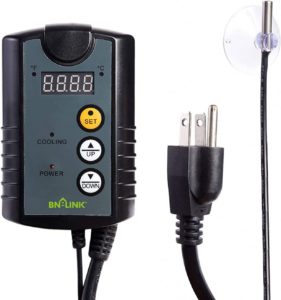
BN-Link Digital Cooling Thermostat Controller
Another accessory that is often overlooked is incorporating fans inside your greenhouse to circulate/move the heated air. Hot air typically rises towards the peak of the greenhouse and having a fan oscillating or blowing can prevent that from happening by mixing the air.
If you need additional information about the heating option included with a Sunglo Greenhouse Kit or would like to speak with someone who owns a Sunglo Greenhouse, contact us at sales@sunglogreenhouses.com or by calling (720)-312-3070.
Sunglo Winter Greenhouse Kits are the best greenhouse for winter gardening.
